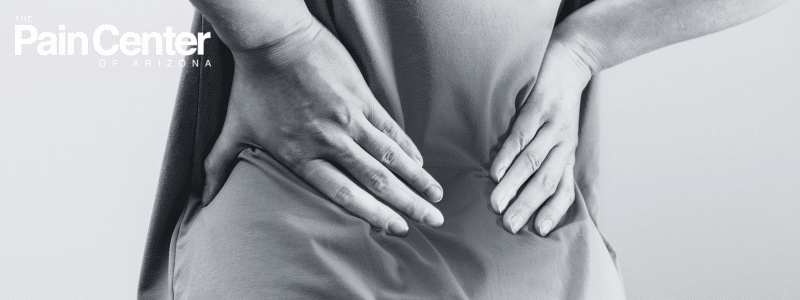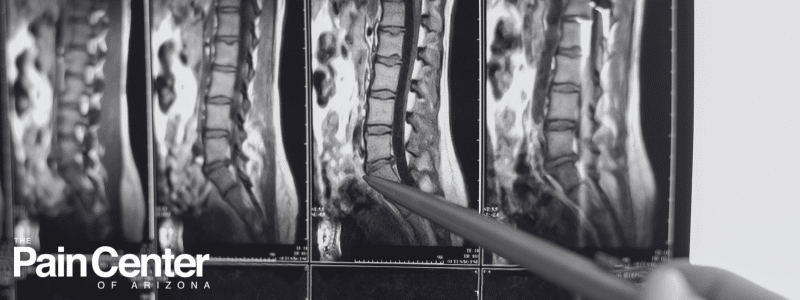
Lumbar fusion surgery is a minimally invasive surgery that provides pain relief to the lumbar spine (the lower back). During this procedure, the surgeon fuses two or more lumbar vertebrae using a method that minimizes trauma to the area. Connecting these areas together provides greater stability to improve the range of movement and reduce pain.
In this blog on lumbar fusion surgery, we’ll look at the following:
- Understanding the lumbar fusion procedure
- Common conditions treated with lumbar fusion
- The risks and benefits of lumbar fusion surgery
- Preparing for lumbar fusion surgery
- What to expect in the first days after surgery
- Long-term care and lifestyle changes post-surgery
Understanding the Lumbar Fusion Procedure
The lumbar fusion procedure is designed to be as effective as possible with as minor trauma to the body as possible. It’s minimally invasive in how it finds and connects the vertebrae and allows for a shorter recovery time.
Step-by-Step Guide to the Surgical Process
- To begin lumbar spinal fusion surgery, your surgeon will give you anesthesia to make the process quick and painless.
- Once ready, they will use surgical tools to make a small incision to the target area.
- With the area accessible, your surgeon will use bone grafting to fuse the two or more adjacent vertebrae while removing any causes of nerve decompression in the process, such as a ruptured nerve.
- With the procedure’s main goal done, your surgeon will stitch the area closed, and you’ll begin the recovery process.
Common Conditions Treated with Lumbar Fusion

Pain in the lumbar spine is caused by various spinal conditions that create negative symptoms like numbness, weakness, and discomfort. The main conditions that lumbar fusion can treat include:
Spondylolisthesis
One vertebra slips onto another due to an injury or existing condition, leading to chronic lower back or leg pain.
Spinal Stenosis
Occurs when the space around your spinal cord becomes too narrow and causes back or neck pain and tingling in your arms and legs.
Degenerative Disc Disease
Natural cushioning (disks) in your spine wear and cause bone friction, creating discomfort and mobility problems.
Herniated Disc
A disk’s center nucleus escapes through a tear into the spinal canal, creating pressure and pain on the spinal nerves.
When is Lumbar Fusion Recommended?
When the pain from a spinal condition begins to impact everyday life, that’s when it’s time to consider treatment. Lumbar fusion is for patients with degenerative disc disease, which can occur due to the above conditions.
The Risks and Benefits of Lumbar Fusion Surgery
Lumbar fusion surgery can effectively relieve pressure and pain put on the spinal cord from degeneration. Like any surgery, there are both benefits and risks to consider. Some patients may be a better fit than others for the procedure and have a greater chance of success.
Overall, lumbar fusion surgery is a low-risk procedure that comes with minimal chance of risk. For example, following your procedure, your doctor will look for signs of infection or blood clots as your body heals.
The key to a successful procedure is going with a highly qualified surgeon with extensive spinal field experience and staying on top of your post-op recovery, going to follow-up appointments, attending physical therapy, etc.
Preparing for Lumbar Fusion Surgery

Before your procedure, you must take the necessary steps to prepare for the best possible success of your lumbar fusion.
- Stop smoking or using tobacco products, which can hinder bone growth
- Call your doctor to discuss current medications you take
- Take blood tests to evaluate your overall health and tolerance for surgery
If you have any additional concerns about how your lifestyle may affect the surgery, address these with your doctor.
The Immediate Postoperative Phase
Following your procedure, you’ll move immediately into the recovery from spinal fusion surgery. Initially, after surgery, you may feel tired and sore, and it may be difficult to sit, stand, or be in one position for very long.
Your doctor will supply detailed instructions on your after-care, including when to schedule your follow-ups, what types of activities to avoid, physical therapy, and pain medication info. It’s imperative you keep up with your responsibilities in recovery, as this significantly contributes to the overall success of the procedure.
What to Expect in the First Days After Surgery
After your procedure, you’ll be sent home to begin recovery. Only a small percentage of patients will stay in the hospital for one or two days following surgery. It’s essential to be aware of your activity limitations and pain control options to make recovery as smooth as it can be.
Lumbar fusion is designed to promote a quicker healing process in the body so that recovery can take a shorter amount of time. Avoid bending, lifting, or twisting in the first couple of weeks. Specifically, don’t lift anything heavier than 5 to 10 pounds the first several days after surgery.
The majority of patients can do light housework and other activities within a period of 4 to 6 weeks. While it depends on the type of job, you may be able to return to work at this time as well. And as you fully recover, you’ll likely return to regular life within six months.
Physical Therapy and Rehabilitation Post-Lumbar Fusion
Physical therapy is a key part of recovery, beginning around week 4 or 7 post-lumbar fusion. It typically lasts around 12-16 weeks, depending on a patient’s progress and the severity of their condition before treatment. PT uses different stretches and exercises to strengthen and increase mobility, led by professional physical therapists.
Pain Management After Lumbar Fusion Surgery
Along with physical therapy, your doctor will prescribe medication to reduce pain during recovery. The most commonly prescribed medications for post-op lumbar fusion patients include opioids, NSAIDS, and acetaminophen for pain, muscle relaxants, and gabapentin or pregabalin for nerve pain management.
Long-Term Care and Lifestyle Changes Post-Surgery
Lumbar fusion surgery is designed to enhance and broaden your physical capabilities. By reducing the effects of disc degeneration, lumbar fusion enables you to return to the time before your life was taken over by chronic pain.
Along with the surgery itself, it’s crucial to maintain regular checkups with your doctor to monitor the ongoing effectiveness of the fusion. Whether it’s a week or a year after lumbar fusion surgery, any concerns that arise should be promptly addressed with your doctor to prevent the progression of potential complications.
Success Rates and Prognosis After Lumbar Fusion
Various research studies and reports have been published on the effectiveness of lumbar fusion. Below are several of these professional insights.
- A study on spondylolisthesis patients who underwent lumbar fusion found that success rates ranged from 82% to 92%.
- One sample from spinal stenosis patients reported symptomatic relief within two years following lumbar fusion.
- A 2021 report found that treating degenerative disc disease through lumbar fusion surgery with rigid tools is successful in 84 to 92% of cases.




